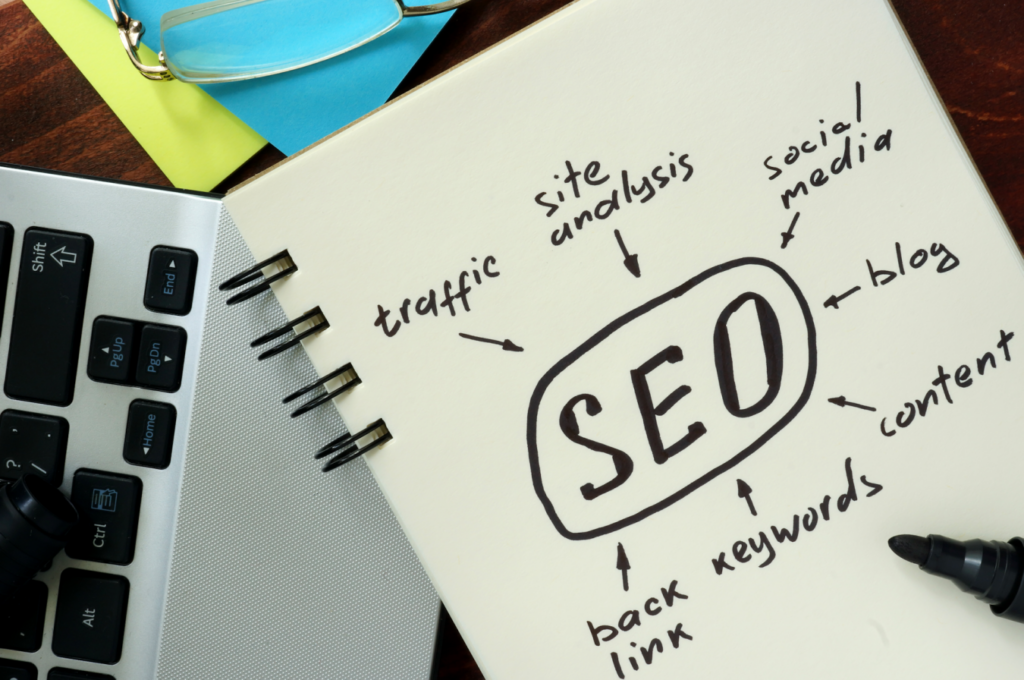While the term SEO is very familiar to anyone who does any sort of online marketing, the terms on-site SEO and off-site SEO are not as familiar or referred to as much, even though both play a significant part in how your web site displays and ranks in search engines.
So what exactly are on-site SEO and off-site SEO?
- On-site SEO – The process of optimizing web sites for speed, reliability, security, and relevancy. This includes using keywords in your content, optimizing your web site code, and tagging the images and content properly on your web site. On-site SEO is the essential foundation for having your web site properly indexed and ranked by Google.
- Off-site SEO – The process of optimizing web sites that involves linking from external web sites to your web site. Off-site SEO helps give your business’ credibility by having many outside sources referencing to your business and is an important factor in determining how well your web site ranks in search engines.
Why is on-site SEO important for your business? Good on-site SEO practices can help your web site earn more relevant traffic. Even though algorithms are constantly changing, utilizing these best practices will help keep your web site optimized for on-site SEO.
How does Google know if your web site is optimized for SEO? Google “crawls” the content and HTML code on web sites using automated tools (called bots) to evaluate the content and HTML code and make this determination. All of this can affect your ranking on Google and other search engines.
What can you do to improve your on-site SEO?
- Add more pages to your web site: Every time you publish a new blog post, a new page is created on your web site. This gives your web site a new searchable page that can be indexed by search engines. It is also important that the content on your web site be relevant to the search topic, be useful to readers, provide value to them, and of course contain the information they are looking for.
- Insert internal links: Including internal links to other relative pages on your web site can help keep visitors on your web site longer. Internal links enable web site visitors to easily view additional information about a related topic on your web site without them having to search for it. Google searches for internal links when crawling web sites.
- Use keywords appropriately: Identify the keywords to use throughout the content on each of your web pages; however, don’t overdo it or Google will penalize you. Google can see if you are stuffing your content with keywords. Content that contains repetitive use of keywords is not considered quality content by search engines and could have a negative impact on your search rankings.
- Create SEO-friendly URLs: When creating new web pages, including blog posts, make sure each URL on your web site is short and contains keywords. Some studies say that Google favors short URLs and will therefore rank your pages better. It is not recommended that the URLs for existing web pages be changed because this result in broken links on your web site.
- Optimize images: Use keywords in image file names and alt text tags. Even though image file names and alt text tags are not visible to visitors to your web site, the search engine bots can see this information. Image file names and alt text tags help search engines see what your page is about. In addition, don’t use images that are too large in file size, as this will affect your site speed and cause slow loading time.
- Improve mobile responsiveness: Because so many people view web sites on mobile devices, Google has started penalizing web sites that are not mobile-responsive. If your web site is not mobile responsive, it will likely not display very high in Google’s search results, increasing the chances that potential customers will not see your web site in the search results when they perform a search on a mobile device.
- Increase site speed: If your web site is slow to load, visitors will not stay on your web site and probably won’t come back again to visit your web site either. Search engines can detect if your web site is slow-loading. As stated previously, make sure the images on your web site are not too large, as this can cause slow loading time.
By utilizing good on-site SEO practices on your web site, search engines will be able to find your content, understand what your web site is about, and index your web pages so others can find your content as well.
If you would like to learn more about how we utilize on-site SEO to help you grow your business, please feel free to contact us at [email protected].




